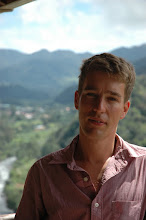Vive La Senegal
My westward travels since Kathmandu have finally run up against the ocean. You can't get any further west than Dakar in Africa unless you take to the seas and visit the Cape Verde Islands. It seems an appropriate place in which to quit a continent that has occupied me since November and ready myself for the Americas.
West Africa has left me a little jaded and travel weary to be honest. The final section from the Niger Delta to the coast has seen us cover over 1000km of relentlessly flat Sahel scenery in gruelling temperatures. The nondescript town of Kayes en route is officially the hottest town in Africa with afternoon temperatures regularly in the high 40s at this time of year. These are not places in which to linger long, and in truth they offer meagre pickings in terms of their cultural interest when you have just come from the Dogon Country.
However, Senegal does reward the journey when you reach the coast. We holed up at a lovely beach resort for a few days for some much needed R&R, before braving the dire warnings of the guide books in order to head into Dakar, the uncrowned capital of West Africa and a city with an unenviable reputation for noise, pollution and daylight robbery. Well, the guidebooks can't always have it their way. This is an exciting and vibrant city, with a wealth of attractive French colonial architecture, a cosmopolitan feel and a fabulous location on the final pensinsula before Africa runs out and the Atlantic begins. The people are friendly and sophisticated and for once in West Africa seem well geared up for meeting the expectations of western tourists. This is a great city indeed.
Out in the bay of Dakar sits the picturesque Isle de Goree, with a tiny fortified town of crumbling, brightly painted colonial villas and administrative buildings. Goree was the original European base in sub-saharan Africa, settled as early as the 15th C by the Portuguese, and subsequently it was the centre of French power in the region. It survives a picture postcard place, more like a Cornish fishing village than a slice of modern Africa, though the weather is quite a bit better than in Cornwall. Grace and I finished up our trip here and we couldn't have dreamt up a more idyllic spot if we'd tried.

